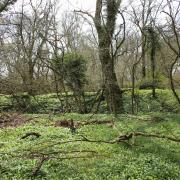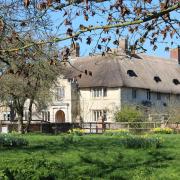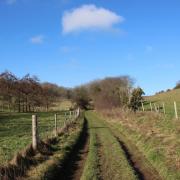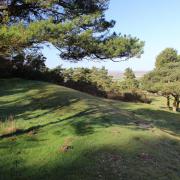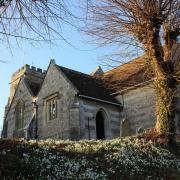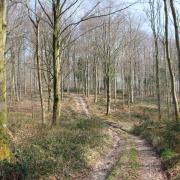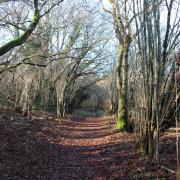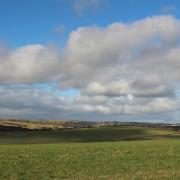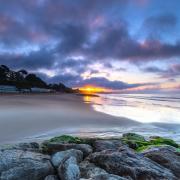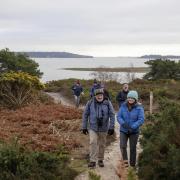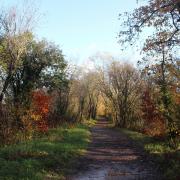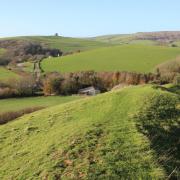Edward Griffiths takes a fascinating walk through the history of this seaside resort
From wild heath to prestigious spa town for ‘convalescents and patients in the most delicate state of health’, Bournemouth’s genesis began with a handful of inspired landowners, architects and doctors just over 200 years ago. This walk visits historic places associated with the major ‘players’ who built Bournemouth.
Information
• Distance: 4 miles/6.5km
• Time: 3½ hours
• Exertion: Some hills. Not too strenuous.
• Start: Bournemouth Pier Approach (Grid Ref: SZ089907)
• Map: OS Landranger Sheet 195
• Public Transport: Dozens of Yellow Buses
• Dogs: On leads during this urban walk
• Refreshments: Countless cafés and restaurants en route
The walk
1. Our walk through Bournemouth’s history start at Bournemouth Pier Approach. London architect and garden designer Decimus Burton built Bournemouth’s first landing stage in 1856. He succeeded Benjamin Ferrey, designer of the ‘marine watering place’ 1838-41 commissioned by George Tapps-Gervis. The second pier opened in 1861, designed by Christopher Creeke, who was Surveyor to the Commissioners for ‘Improvement of Bournemouth’ from 1856. The cast-iron pier opened in 1880, the concrete section was built 100 years later.
2. Walk under the flyover. Look right, where the Pavilion forecourt meets the streamside garden. Here, Belle View Boarding House opened 1838, designed by Benjamin Ferrey. From 1856 – 57 meetings of the Bournemouth Commissioners were held at the Belle View Assembly Rooms, designed by Christopher Creeke, behind Belle View ‘Hotel’, then at Creeke’s Exeter Road offices from 1858-74 until Creeke designed Bournemouth’s first town hall.
3. Return and walk up Bath Hill. Before Royal Bath Hotel, turn right above the car park to East Cliff Promenade. Turn left. Sir Merton and Lady Annie Russell-Cotes bought Bath Hotel in 1876, which was designed by Ferrey. Merton built East Cliff Hall for Annie 1901. This became Russell-Cotes Art Gallery and Museum in 1922.
4. Up into East Overcliff Drive, keep straight on. Turn left into Gervis Road. Continue to Meyrick Road/Grove Road crossroads. Pause on the corner to admire Bournemouth’s oldest letter box dating from 1866.
5. Continue to Gervis Road. Turn left. Walk to Bath Road roundabout. Bear right into St Peter’s Road. Meander down, passing right Glen Fern Road and Burlington Arcade, to left churchyard gate. St Peter’s Church was designed by John Tulloch of Poole in 1841. Sir George Tapps-Gervis paid for its building, and it was consecrated in 1845. Its first Vicar, Alexander Morden Bennett, enlarged the building between1855-59, and completed it with a tower in 1879.
6. Out of the same gate, cross into Gervis Place. Down, turn right into The Arcade. Through to Old Christchurch Road, turn left down to right W H Smith’s. Located nearby was the Tapps Arms (later Tregonwell Arms), built in 1809 for travelers between Iford and Poole by Sir George Ivison Tapps who inherited the Manors of Christchurch and Hinton Admiral in 1778. Sir George owned 200 acres of East Cliff and land around present Bournemouth Square. He also planted thousands of pines around the Bourne stream.
7. Walk back up Old Christchurch Road. Turn second left into Albert Road. On the right is the Theatre Royal, originally Albert House, Bournemouth’s second Town Hall (1887-92).
8. Returning to Old Christchurch Road, continue uphill. Pass Yelverton Road. Bournemouth’s third Town Hall (1892-1921) was situated somewhere in Yelverton Road. Up to the end junction, cross left into Horseshoe Common. Follow the Tarmac path into trees and under Wessex Way flyover. At the crossing, turn right through woods to a fork. Go right to Dean Park Road. Turn left.
9. Christopher Creeke died in Dean Park in 1886 and is buried at Wimborne Road Cemetery. Projects he was involved in included Richmond Hill Congregational Church, two wings for Royal Bath Hotel, the east wing for the National Sanatorium, and the Royal Victoria Hospital in Westbourne. Past a right turning, fork right to meet Wimborne Road. Turn right. In ¼ mile, cross to Wimborne Road Cemetery gateway. Follow the drive with monkey puzzle trees.
10. Cemetery Chapel was designed by Creeke in 1877. Russell-Cotes’ mausoleum stands near the chapel’s west end. Lady Annie Russell-Cotes died 1920 and Sir Merton 1921.
11. Returning into Wimborne Road, turn right. Cross into left Meyrick Park Crescent. Down to the railway bridge, walk into Meyrick Park’s Central Drive. Reaching the left car park, turn left. Follow the drive past the rugby club, bowling green and tennis courts. Reaching the road, turn left down to Braidley Road. Turn right. Under Wessex Way flyover, go up the next bridge’s right steps into St Stephen’s Road. Left, St Stephen’s Church was built in 1885 in memory of Alexander Morden Bennett, the first vicar of St Peter’s.
12. Right, the National Sanatorium was founded in 1855 by Charles Pannell (1818-1905). In 2000 it was converted and extended as Brompton House for residential use. Lower Gardens’ Invalids Walk connected the National Sanatorium with the seafront.
13. Return and descend steps onto the paved path to the right Town Hall. Mont Dore’s foundation stone was laid 1881 and opened in 1885 as a luxury hotel and hydropathic institution by London physician Dr Dobell, who initiated the Mont Dore cure from Auvergne. It operated as a hospital from 1914-19 and became Bournemouth’s Town Hall in 1921.
14. Leave past barriers to roundabout. Follow Bourne Avenue to The Square. Decimus Burton designed the Lower Pleasure Gardens 1873. His bridge over the Bourne developed into The Square.
15. Cross The Square into far corner Exeter Road. Continue up to Terrace Road. Turn left. Walk along Exeter Road, crossing Exeter Park Road. Reaching the roundabout, see left Exeter Hotel before returning to Pier Approach. The turrets on the Exeter Hotel mark the original mansion, built in 1810 by Lewis Tregonwell, former Dorset Volunteer Rangers Captain, and Henrietta Tregonwell, co-founders of Bournemouth. Lewis died in 1832, and Henrietta in 1846. The Tregonwell family vault is in St Peter’s Church.
More…
• The ultimate Dorset walking guide - With Durdle Door, Brownsea Island, Jurassic Coast and a whole host of other stunning sights, Dorset is an amazing place for a stroll




